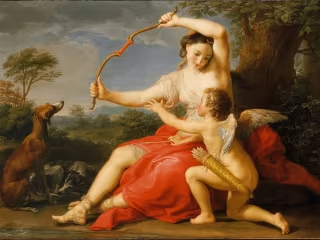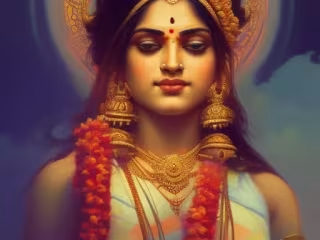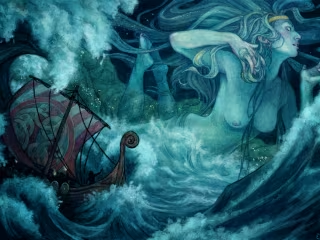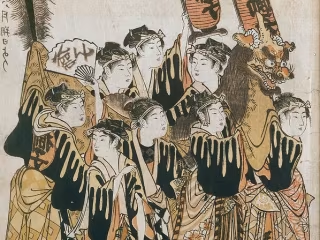Amaterasu: Sun Goddess & Ruler of Heaven and Earth
0
Ghostwriter
Blog Writer
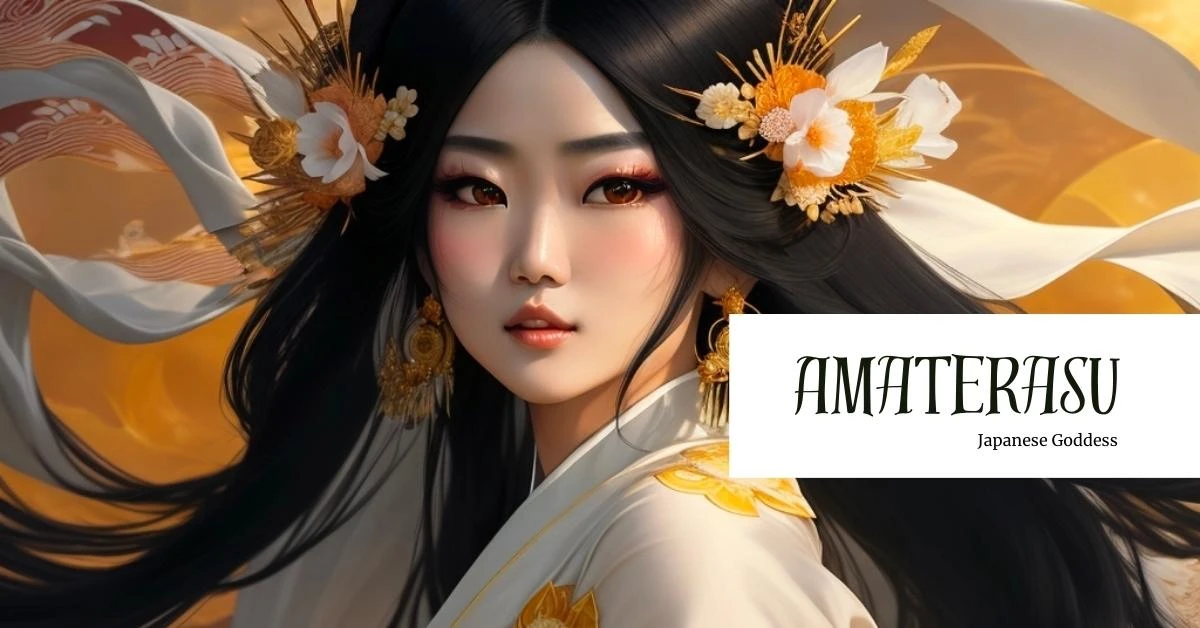
At the heart of ancient Japanese mythology and Shinto (the oldest religion in Japan) is the supreme and revered deity: Amaterasu, goddess of the sun. As the source of all light, life, and creation, the sun goddess sustains heaven and earth with a light so compelling that her father appointed her ruler of the universe when he first laid eyes on her.
With her well-known story of Ama-no-Iwato, to legends of her relationship with her brothers Susanoo (the storm god) and Tsukiyomi (the moon god), Amaterasu has become a symbol of life and light throughout Japanese history. Furthermore, despite the cultural influences of Confucianism and Buddhism, the ancient practice of worshiping Amaterasu, the deity of the sun, has persisted in Japanese society for countless centuries. Her faithful followers have preserved their reverence for her, remaining steadfast in their devotion to her just as their ancestors did thousands of years ago.
Table of Contents
Overview of Amaterasu
From the moment of her creation Amaterasu Omikami, the sun goddess of Japanese mythology, was said to be so radiant that she illuminated both heaven and earth. As the chief goddess of Shinto (Japan�’s oldest religion) and ruler of the highest celestial plain (Takama No Hara), Amaterasu, also known as Amaterasu Ōmikami (天照大御神, 天照大神) or Ōhirume no Muchi no Kami (大日孁貴神) (“Amaterasu – New World Encyclopedia” 2019) has bestowed upon Japan a divine legacy that echoes through centuries.
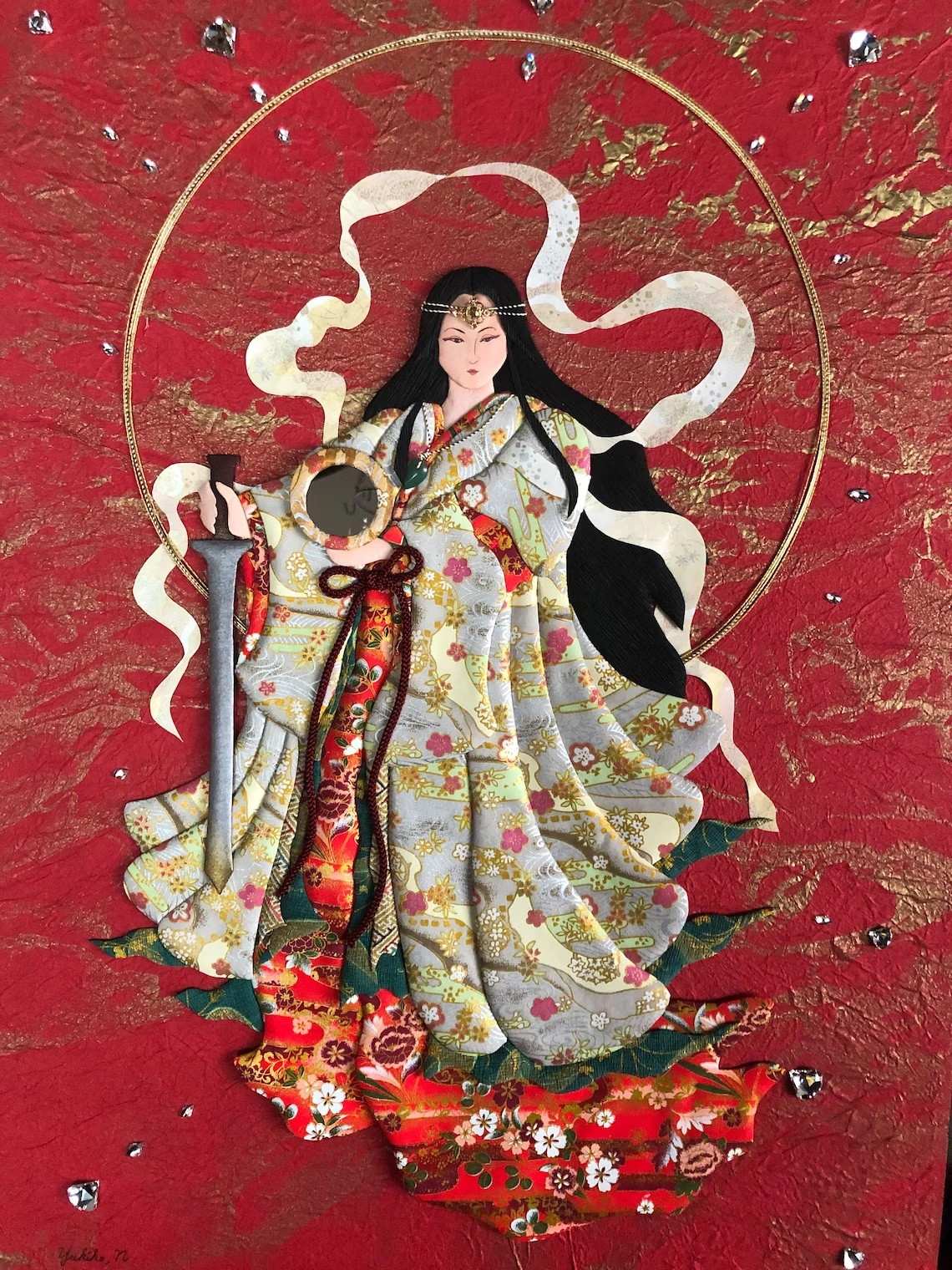
Titles
The Sun Goddess
Ruler of the heavens
Ohirume no Muchi no Kami (The Great Sun of the Kami) (Cartwright 2012)
Goddess of Creation
Mother of the Imperial Family
Abilities
Amaterasu is the rising and setting sun: without her, all forms of life would cease to exist. As ruler of the heavens, she governs over all spirits (kami), and her divine powers brought about the cultivation of rice and wheat: she is also credited with first using silkworms and looms for weaving.
Characteristics
Amaterasu is a revered deity known for her ethereal beauty and enchanting presence. Often depicted as graceful, the sun goddess has long, lustrous black hair, radiant skin, and bright eyes. Her attire consists of flowing kimonos crafted from the finest silks and satins. Such richly detailed depictions of the goddess have helped to cement her place as one of the most beloved and celebrated figures in Japanese folklore and culture.

Traits
Amaterasu’s role as the ruler of heaven is to ensure the continuity of life by maintaining order. As the embodiment of the sun, she assimilates all of its qualities and provides comfort and assurance to all those who look to her for guidance and protection. Having served as the mother of the imperial family she is revered as the goddess of the state, and is both nurturing and maternal.
Symbols
Throughout Japanese history, there have been numerous symbols that signify the roles and contributions of Amaterasu to Japanese culture and society. As the goddess of the sun, it is only natural that the sun itself holds significant importance as a symbol. Amaterasu also introduced the cultivation of rice and wheat, which contributed to the sustenance of the Japanese community, so both rice and wheat are symbols of her influence and power. One of the most widely recognized tales relating to her is the Ama-no-Iwato. According to this legend, she isolates herself within a cave, which is why many people associate the cave with Amaterasu’s unyielding strength and perseverance.
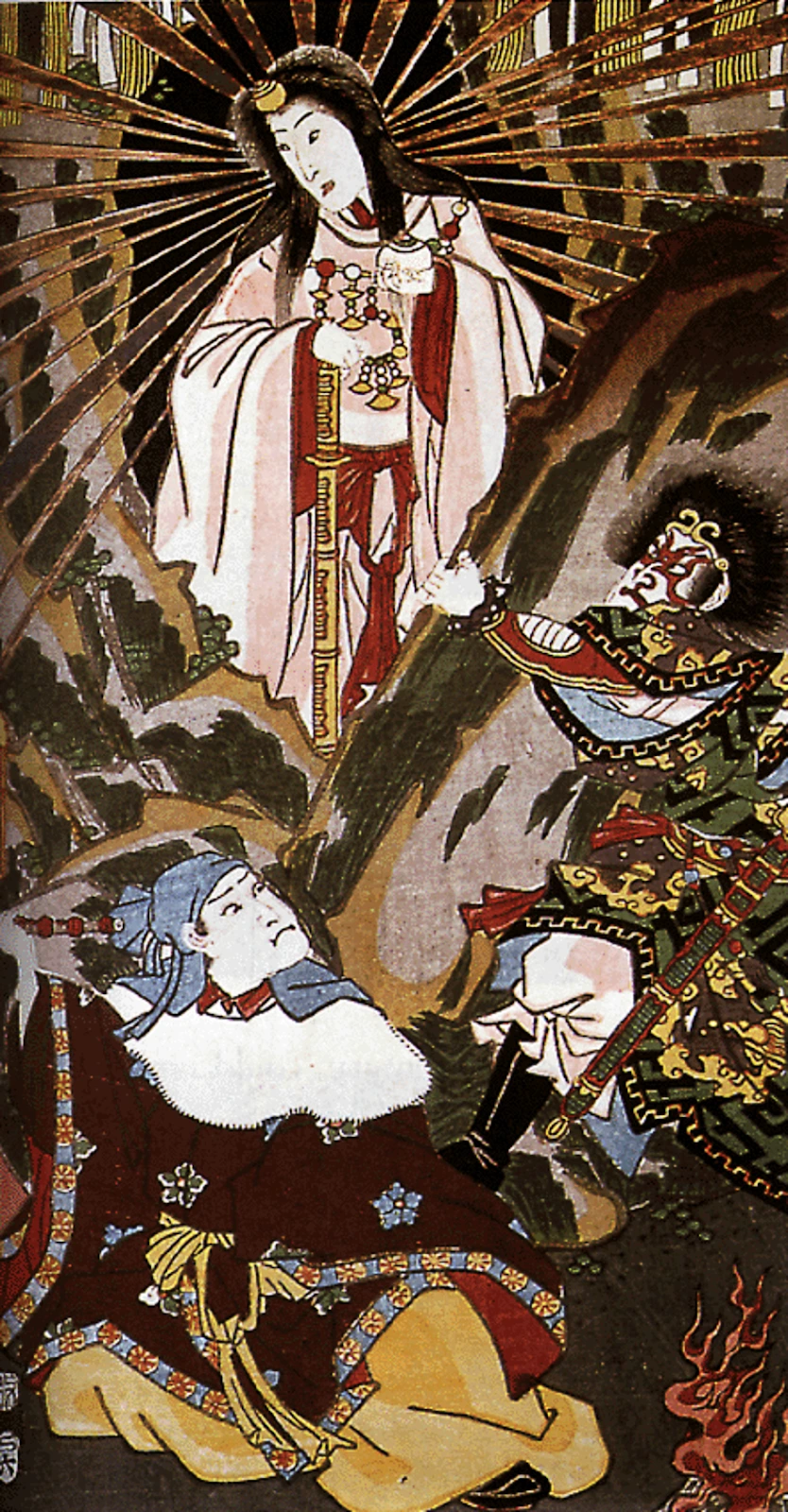
Festivals and Rituals
A leading figure in Japanese spiritual and cultural traditions, Amaterasu’s legacy endures to this day. Many devotees seek blessings and guidance from the Goddess through many shrines and temples across Japan. The Grand Shrine of Ise is the most prominent shrine dedicated to Amaterasu in Ise, Mie, in western Honshū. It is customary to rebuild the Inner Shrine at Isé every twenty years as per Shinto tradition, ensuring that it remains pure and new. Visitors worship outside the southern gate, while only priests and members of the imperial family can enter the innermost sanctum. It is customary for Shinto believers to make a pilgrimage to the shrine at least once in their lifetime.
In Japan, there are annual street processions to honor Amaterasu on July 17th and a winter solstice celebration on December 21st (“Amaterasu – New World Encyclopedia” 2019): commemorating Amaterasu’s emerging from the cave, bringing light and warmth back into the world.
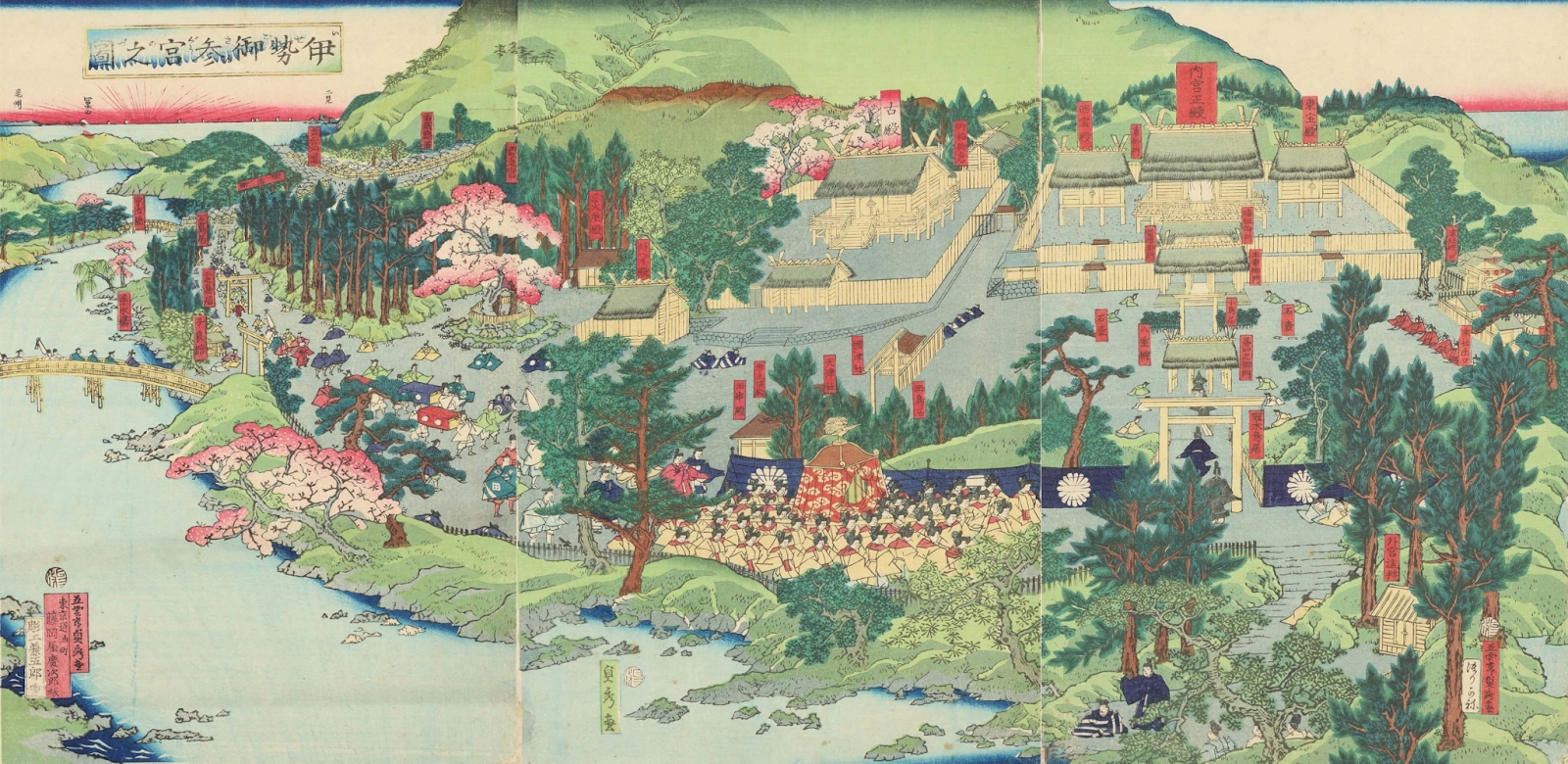
Legends associated with Amaterasu
Throughout history, Amaterasu has been the subject of countless myths and legends, each with its unique version and interpretation. These ancient stories provide us with invaluable insight into the life and character of this revered figure. From tales of her miraculous birth to her complex relationships with her brothers Susanoo and Tsukuyomi, every detail deepens our understanding of the sun goddess and her significance in Japanese mythology.
Origin story
According to the beliefs of the Shinto religion, Amaterasu is the child of Izanami and Izanagi, the two primordial gods responsible for the creation of the Japanese islands. Izanami is recognized as ‘she who invites,’ while Izanagi is known as ‘he who invites.’ (Cartwright 2012a) Amaterasu’s birth is shrouded in myth, with multiple versions of the story found in Japanese sacred texts. The Nihon Shoki includes two versions of the tale, while the Kojiki or Furukotofum contains the most widely accepted account of her conception.
The Nihon Shoki
The Nihon Shoki, or Chronicles of Japan, is a highly esteemed history book that dates back to classical Japan. As the second-oldest text in Japanese history, it is more detailed and comprehensive than its predecessor, the Kojiki. Its value to historians stems from the fact that it contains the most extensive historical records of ancient Japanese history. Along with this, it also includes a collection of myths about the origins of Japan and a genealogy of the Imperial family. (“Nihon Shoki – New World Encyclopedia” 2019)
In the Nihongi, there are two versions of the origins of Amaterasu. In the first version, the divine beings Izanagi and Izanami no Mikoto are said to have descended from heaven and created Japan’s islands, mountains, rivers, and seas. They were, however, most concerned with bringing forth the high Kami who would rule over all these lands (“Amaterasu – New World Encyclopedia” 2019). First, they brought forth Amaterasu Omikami, who emanated light from every horizon. In their joy, the divine parents sent the child to heaven to reign over the highest celestial plain (Takama No Hara). Following Amaterasu’s ascent to heaven, Tsukiyomi no Mikoto, the Moon Kami, came into existence and was sent to join Amaterasu as her brother and husband, Soon after, her brother Susano-O no Mikoto, the Storm Kami, was created and sent to control the seas.
In the second version of the myth found in the Nihongi, the divine progenitor is solely named Izanagi (“Amaterasu – New World Encyclopedia” 2019). In this particular narrative, Izanagi desired to create a deity worthy of governing the universe. After careful consideration, he took hold of a white-copper mirror in his left hand and created Amaterasu Omikami. Then he took another mirror of the same material in his right hand and used it to produce Tsukiyomi no Mikoto. Lastly, Izanagi turned his head and looked askance, leading to the emergence of Susano-O. (Nihon and Aston 1989)
The Kojiki
The Kojiki, also known as the Furukotofumi or “Records of Ancient Matters,” is a priceless artifact that provides valuable insights into the ancient history of Japan. It was compiled during the first half of 680 C.E. at the command of Emperor Temmu and remains the oldest surviving book of its kind. (“Kojiki – New World Encyclopedia” 2019)
According to the Kojiki, the final and most widely accepted version of Amaterasu’s birth involves Izanagi and Izanami creating the islands of Japan and the entire natural universe. That is until Kagu-Tsuchi’s birth. Unfortunately, upon emerging from his mother’s womb, Kagu-Tsuchi singed his mother, causing Izanami to become gravely wounded. Despite attempts to save her, Izanami ultimately succumbed to her injuries and passed away. Amid his grief, Izanagi sought to retrieve his beloved Izanami from Yomi, the underworld. With a heavy heart, he journeyed to the land of the dead and searched for her. However, upon finding her, he was devastated to discover that her flesh was decaying and covered in maggots. Despite his desperate pleas, Izanami could not leave the realm of the dead and return with him to the world above. (Chamberlain 1989)
Barely escaping Yomi, Izanagi went to purify himself and bathed in a nearby river, cleansing himself of any remnants of the underworld that may have clung to him. As he washed his face, something miraculous occurred. When he rinsed his left eye, a radiant figure emerged – Amaterasu, the goddess of the sun. Overcome with wonder and amazement, Izanagi continued to wash his face. Soon after, he rinsed his right eye, and then Tsukiyomi no Mikoto, the god of the moon, emerged. Finally, as he rinsed his nose, Susano-O no Mikoto, the god of storms, appeared before him. (Chamberlain 1989)
As a result of great sorrow and loss, three mighty deities emerged, each representing a distinct aspect of the natural world.
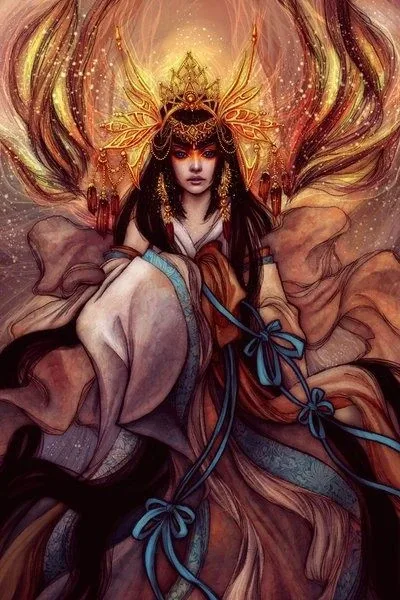
The Birth of Day and Night
The second legend begins with Tsukuyomi and Amaterasu serving as the deities of heaven as husband and wife. One day, Uke Mochi, the goddess of food, invited Amaterasu over for a feast: not being able to go, Amaterasu sent Tsukuyomi instead. Once Tsukuyomi arrived, Uke Mochi began to prepare the food; however, Tsukuyomi discovered that the goddess of food was preparing the food by throwing up the rice, pulling vegetables out of her ears, and spilling milk from her nose. Tsukuyomi was disgusted and then proceeded to chop her head off. Amaterasu, however, was so upset with Tsukuyomi for killing Uke Mochi that she labeled him evil and broke up with him. (“Japanese Mythology: Imperial Regalia,” n.d.)
After their separation, the sun goddess Amaterasu and the moon god Tsukuyomi took control of the sky separately, one illuminating the day while the other cast a soft glow over the night.
Amaterasu and the Cave
One of the most famous stories about Amaterasu involves her hiding in a cave. Her brother Susanoo damaged the roof of her palace and threw a horse’s body into it while she and her goddesses were weaving clothing. A dead horse falling from the horse ended up causing some of the goddesses to die. After such a terrible event, Amaterasu felt awful, so she retreated to a cavern in the heart of the earth known as the Rock Cave, also referred to as Ama-no-Iwato. She refused to leave the cavern, causing widespread darkness to envelop the entire world. (“Amaterasu – New World Encyclopedia” 2019)
The gods tried everything to get Amaterasu to leave the cave: from placing loud cocks outside the cave to placing a sakaki tree at the entrance, but nothing worked. Then the goddess Amenouzume danced sensuously, and the other gods began laughing, which made Amaterasu curious. Opening the cave to see what was going on, she was distracted by seeing her reflection. Sensing her distraction, the strong god Ame-no-tajikarao-who yanked the goddess out of the cave entrance. Tuto-Tamu then stated that the goddess could no longer hide. Amaterasu agreed to remain in the visible world and never again withdraw. (“Amaterasu – New World Encyclopedia” 2019)
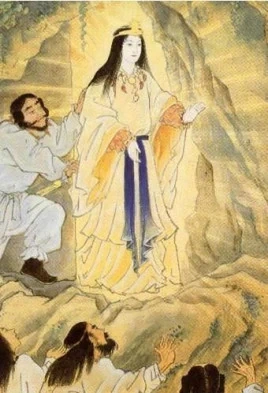
Modern appearances
Although she originates from thousands of years ago as a sun goddess, Amaterasu continues to hold relevance even in the present day. The popular action-adventure video game, Okami, was created and published by Capcom and is based on the legend of Amaterasu. Critics and gamers alike enjoyed the game, which serves as a testament to the lasting impact of Amaterasu’s story and legacy.
Amaterasu summary
Amaterasu has been a revered guiding force since her arrival into this world. Even after thousands of years, she continues to shine as a symbol of hope and inspiration for those who believe in her divine presence. The lasting legacy of her influence has helped shape the country’s identity and future. Her legends have left an enduring imprint on Japan’s cultural, social, and political landscape, cementing her place as one of the most influential figures in the nation’s history.
References
“Amaterasu – New World Encyclopedia.” 2019. Newworldencyclopedia.org. 2019. https://www.newworldencyclopedia.org/entry/Amaterasu.
Cartwright, Mark. 2012a. “Izanami and Izanagi.” World History Encyclopedia. December 6, 2012. https://www.worldhistory.org/Izanami_and_Izanagi/.
———. 2012b. “Amaterasu.” World History Encyclopedia. December 17, 2012. https://www.worldhistory.org/Amaterasu/.
Chamberlain, Basil Hall, trans. 1989. The Kojiki: Records of Ancient Matters. Amazon. First Edition. Rutland: Charles E. Tuttle Company. https://www.amazon.com/gp/product/0804814392/ref=as_li_tl?ie=UTF8&camp=1789&creative=9325&creativeASIN=0804814392&linkCode=as2&tag=newworldencyc-20&linkId=83df4bed72539f2a52beb06a1d71be79.
“Japanese Mythology: Imperial Regalia.” n.d. Canadianstudies.isp.msu.edu. https://canadianstudies.isp.msu.edu/news_article/22288.
“Kojiki – New World Encyclopedia.” 2019. Newworldencyclopedia.org. 2019. https://www.newworldencyclopedia.org/entry/Kojiki.
“Nihon Shoki – New World Encyclopedia.” 2019. Newworldencyclopedia.org. 2019. https://www.newworldencyclopedia.org/entry/nihon_shoki.
Nihon, Shoi, and W. G. Aston. 1989. Nihongi; Chronicles of Japan from the Earliest Times to A.D. 697. Amazon. 1St Edition. Rutland, Vt.: Tuttle Publishing. https://www.amazon.com/gp/product/0804809844/ref=as_li_tl?ie=UTF8&camp=1789&creative=9325&creativeASIN=0804809844&linkCode=as2&tag=newworldencyc-20&linkId=83df4bed72539f2a52beb06a1d71be79.
Did we miss something? Do you know another aspect of this legend? Don't hesitate to reach out!
Like this project
0
A client hired me to write several informative pieces on Japanese Goddesses, and this blog post centers around the Goddess of the Sun, Amaterasu.
Likes
0
Views
306
Tags
Ghostwriter
Blog Writer


